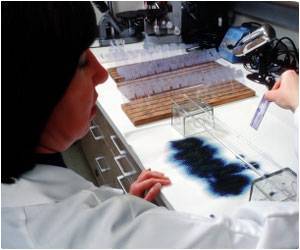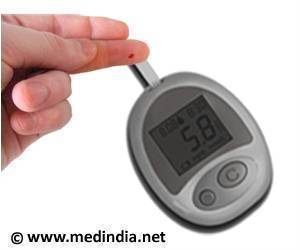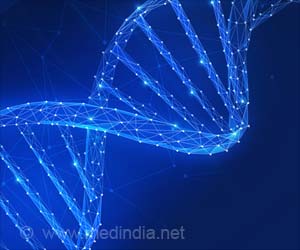Lie detector is a device used to establish the presence of truth or falsehood by recording significant alterations in blood pressure, pulse etc., during a question and answer round on the accused.
Do you think you are the most attractive person when you walk into a room? Do you prefer to have unattractive friends? Did you ever wish to have sex with your best friend’s boyfriend? Are you jealous of your brother’s success?
These questions may well mark the common man’s closest brush with the ‘lie detector’, while viewing the immensely popular American show, ‘The Moment of truth’, that portray contestants in a tight spot, answering a volley of 21 intrusive questions while being strapped on to a lie detector, amidst an attentive and interactive audience of friends and family members.‘Lies prove very costly’ or ‘truth always wins’, as substantiated by the show - the truthful contestants walk away with prize money, sometimes thousands of dollars, commensurate with the number of truthful answers.
All of us are familiar with lies, and though most have resorted to lies – harmless or otherwise at some point, universally, it is difficult to take a lie ‘lying’ down. Even though it is believed that a thousand lies may be needed to conceal a single lie, which should ideally act as a deterrent, lies have witnessed a rapid growth trajectory, both in magnitude and content, making it ‘unbelievingly’ tough to discern the truth. For those who have mastered the ‘art of lying’ and are at their creative best, it may take only the systematic ways of machines to crack devious minds.
The quest for truth at the subliminal level, especially when knowing the truth can make all the difference between life and death, may have inspired the invention of the Lie Detector. The lie detector, also called the polygraph, is a fascinating development of employing machines to delve into the human mind, to verify the connection between thoughts and words, to detect the making of deceit.
Chinese and Russians’ Search for Truth
Lie detecting technology, born thus, may have also taken a leaf out of the Chinese method of lie detection, practiced way back in 1000 BC. The Chinese believed that stress caused by lying produced certain physiological changes.
To ascertain guilt, the Chinese filled dry rice into the subject’s mouth; during the examination, if the subject was guilty of lying, the stress induced in the body was thought to cut salivation, causing the mouth to go dry. The presence of such changes in the body caused due to the ‘stress of lying’ formed the basis of establishing truthfulness or deceit.
It may be interesting to hear how Russians tracked deceit. To detect liars, the accused had to hold a red-hot iron or dip their hands into a pot of boiling water and remove an object. The hands would then be completely sealed or bandaged and checked three days later for any signs of injury - absence of any injury would directly imply innocence. They believed in the combination of ‘truth attracting divine grace’ and ‘truth triggering positive forces in the body which could promote healing.’ Further examples of crude means of extracting a “confession” include the infamous Salem witch trials in the US and various Inquisitions recorded in history as having been practiced all over the world.
Baring the Polygraph
Lie detector or polygraph is a device used to establish the presence of truth or falsehood by measuring and recording significant alterations in blood pressure, pulse, respiration, skin conductivity, during a question and answer round subjected on the accused. Invented by John Larson in 1921, this device hinges on the premise that lies or false replies will result in distinct changes in the body, capable of being captured and recorded by the device.
Polygraph testing is a two-hour procedure which is usually conducted in four distinct stages - pre-test interview, question round, collection of charts, and analysis of charts. The questions are discussed with the subject in detail before the beginning of the test and repeated about 3-4 times during the test.
During the questioning round, the subject is wired to the lie detector and needs to answer three sets of questions. The response to each question has to be a ‘yes’ or a ‘no’.
The Control Question Test (CQT) pertains to questioning the subject about the crime. The responses are compared with the subject’s response to a previous crime. The Directed Lie Test (DLT) encourages the subject to lie in order to make a comparative study of the patterns when the subject is speaking the truth.
The Guilty Knowledge Test (GKT) seeks the responses to multiple-choice questions about the crime. The responses are recorded and then analyzed by the examiner.
The results of the test are portrayed as wave patterns and are recorded in three distinct charts: for instance, the Pneumograph chart records breathing and movement; the GSR or the Galvanic Skin Response chart records skin alterations; the cardiosphygmograph measures alterations in the blood pressure and pulse rate.
The examiner, who is normally experienced at spotting lies, compares the wave patterns with the patterns produced when the subject was most certainly speaking the truth. Differences in wave patterns assist the examiner in detecting possible lies.
The lie detector is used as an important forensic investigation tool to help solve crime cases. It offers assistance in cracking company fraud, probe marital infidelity and also offers clues in sexual abuse cases. In the United States, the lie detector is also called a truth verifier, allowing people the chance to absolve themselves. In totality, it is perceived as an equipment that does not merely establish lying, but goes a step further in finding solutions to many intriguing cases.
Unfortunately, for all the boon of technology, the use of the lie detector has come under a cloud in recent years, as its verdict is always subjective, based on the interpretation of the examiner, who is only human and can make mistakes.
Can we believe the lie detector?
The polygraph is indeed a time-tested machine and many researches have rated the accuracy of the polygraph machine anywhere between 80% and 90%. Despite this statistic, the machine is not infallible, for it is possible to learn the art of fooling the polygraph. Aldrich Ames and John Walker, both notoriously damaging spies for the Soviet Union, passed polygraph tests administered by the Central Intelligence Agency (CIA)
Those adept at lying, can also train their minds with relaxation techniques in order to portray the right physiological responses, a deceit which no polygraph machine can detect. Polygraph machines are tuned to pick up stress, with the underlying belief that liars are more stressed than those speaking the truth. However, the polygraph cannot measure lies; those skilled at lying can practice many relaxation techniques to beat stress and defeat the purpose of a polygraph.
Can truth be measured just by the presence of certain physiological changes occurring in the body, changes which can also be triggered due to the presence of emotions such as anxiety, anger, and fear? In effect, can we allow people’s lives to depend upon the results of the lie detector?
The American Psychological Association contends that no machine is equipped to accurately sniff out lies. Though, the lie detector accurately measures changes in respiration, heart rate and skin, how these changes are interpreted, is entirely up to the examiner. So in effect, the lie detector depicts only what the examiner wants to depict.
Lobbyists of lie detector tests contend that it is not easy to hoodwink the polygraph, for it is tough to manage three different physiological functions simultaneously.
Yet, there is no way the polygraph can record the difference between ‘stress due to the test’ and ‘stress due to a lie’. Therefore, polygraphs may end up pointing an accusatory finger at honest people, while the ones actually lying may end up with a clean chit.
Perhaps the concluding statement made by the National Academy of Sciences who undertook a widespread study of the polygraph in 2002 may sum up its attributes - "polygraph tests can discriminate lying from truth telling at rates well above chance, though well below perfection.”
This is perhaps why results of lie detector tests are seldom used as evidence in a court though failing a lie detector test can bias public opinion, sway the media and cause the jury to rethink! After all, they are humans and attach great value to whatever arrives in the name of technology.
fMRI – May soon give the Polygraph a run
Brain scans such as functional magnetic resonance imaging (fMRI) used to spot tumors have been found to be far more reliable than the polygraph in the area of lie detection.
Brain scans revealed activity in distinct areas of the brain during deception. Also, more regions of the brain were found to be active during deceit, than while speaking the truth.
The reliability factor of fMRI as compared to the polygraph is best explained by Professor Richard Wiseman, from the Psychology Department of the University of Hertfordshire who said: "The problem with the polygraph is it’s a measure of how anxious somebody is. Many people become anxious when they are attached to the polygraph anyway and good liars are not anxious when they lie. With fMRI you are looking at the brain’s activity and lying is cognitively quite hard. You have to think what is plausible, what the person knows what they can go and check on, and so on. So, in terms of brain activity, the indicators are likely to be more reliable."
Indeed, the fMRI offers a world of promise in the area of lie detection.
The world’s craftiest lies take shape in the human brain. In a world where deceit, right from a harmless lie to a heinous crime raises its head at an alarming frequency, the polygraph could have been a befitting panacea for all lies. But Alas! This lie detector can also lie….
Source-Medindia
SAVITHA/L







